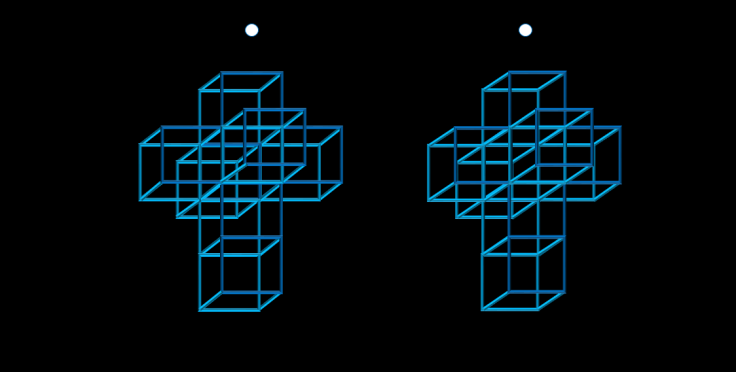Mind-boggling experiments reveal glimpses of a 4th dimension
Fourth spatial dimension beyond human perception a long-held belief by scientists.

The world as we experience it is composed of three-dimensional space – width, depth and height – in addition to the hidden dimension of time. But scientists have long suggested that there may be a fourth spatial dimension beyond what we can perceive or comprehend.
Clearly, proving the existence of this fourth dimension is somewhat problematic due to the fact that we cannot directly observe something beyond our 3D space.
But two new experiments involving the physics of quantum mechanics have given scientists a glimpse of the fourth dimension, with the help of a phenomenon known as the quantum hall effect – a characteristic electrons display when they are trapped in a two-dimensional system under certain conditions.
Through the quantum hall effect, the scientists were able to see the effects that the fourth dimension may be having on our three-dimensional world.
Using ultra-cold atoms trapped in a 2D lattice, the scientists detected a new type of quantum hall effect which has been predicted to occur only in 4D systems, hinting at the existence of the fourth dimension.
A good way to think about this is to imagine how a 3D object casts a 2D shadow, that is without depth. In the latest experiments, researchers were able to observe the 3D quantum 'shadow' of a potential 4D object.
"Commonly, we treat our world as if it has three spatial dimensions plus one time dimension," Oded Zilderberg an author of one of the studies from the Swiss Federal Institute of Technology, told IBTimes UK.
"In modern condensed matter physics, we have found ways to limit the motion of particles to be effectively lower dimensional. In this way, many interesting phenomena were realised."
"From a mathematical point of view, you can always envision a reality in which more spatial dimensions exist," he said. "For our mind, this is, of course, a very odd idea because our perception is naturally three-dimensional. Nevertheless, you can mathematically devise a model of a system in which particles move in four dimensions, plus a single time dimension."
In his 1884 novel Flatland, Edwin Abbot highlights the problem of trying to observe dimensions beyond your own. The narrative follows the life of a square in a two-dimensional world populated by circles, triangles and rectangles – which simply look like lines from the square's point of view. It has no concept of up or down.
But one day, the square is visited by a sphere from the third dimension which tries to explain to him the nature of the flat reality he inhabits. Unable to get its message through to the square, the sphere eventually takes it to the 3D world where it is able to view Flatland from above, finally understanding that the lines it was observing were in fact two-dimensional shapes.
In much the same vein, while we cannot directly interact with the 4D realm, scientists believe that quantum mechanics – the fundamental physics of the very small – may be able to illuminate more of this strange world.
Both of the new studies are published in the journal Nature and can be viewed here and here.





















